Jefferson Scholars Foundation 2018 Electronic Music Workshop | April 25th, 2018
What is Sound?
The sounds we here are the result of compressions (squishing together) and rarefactions (pulling apart) of air molecules within a longitudinal pressure wavefront from some sound source (such as a cello or speaker or mouth).
Sound travels through a longitudinal wave in a medium (usually air).
We can describe characteristics of sounds produced by periodic (repeating) waves with the following terminology:
- Amplitude (pressure intensity) - how loud the sound is
- Frequency (speed/wavelength) - how high or low the sound is
- Phase (only matters if we have multiple periodic sounds) - the temporal relationship between the waves
We will come back to this soon...
What is Electronic (or Electro-Acoustic) Sound?
Electronic (or electro-acoustic) sound is when these compressions and rarefactions are produced by a speaker, which creates sound waves by displacing air by moving back and forth in its casing in response to an electrical signal. Similarly, a microphone works via the reverse process: changes in the pressure around the microphone displace a diaphragm whose movement is turned into an electrical signal.
A speaker producing a sound wave.
A microphone picking up a sound wave and turning it into an electrical signal.
There are many different types of microphones, and we may describe their characteristics in many different ways, but two characteristics stand out as being important:
- Operating Principle - through what mechanism the microphone operates (and whether or not this requires power)
- Polar Pattern - from what directions the microphone records (all around, a focused spot, two directions, etc.)
For our purposes, operating principle may be either dynamic or condenser.
Dynamic microphones DO NOT require power, use the displacement of a single metal plate to pick up physical vibrations, and are less sensitive than condensers.
Condenser microphones DO require power (48V), use the distance between two metal plates to pick up physical vibrations, and are more sensitive than dynamic microphones.
There are many microphone polar patterns, with omni-directional and cardioid being the most common:
Microphone Polar Patterns.
Different recording situations require different polar patterns. For example, recording environmental sounds works best with omnidirectional microphones. Recording specific, single-origin sounds works best with cardioid or hyper-cardioid microphones. What type of recording situation would a bi-directional microphone be best for?
Multiple microphones may be used together in order to record in stereo (2 channels) or multi-channel (>2 channels).
A pair of microphones in an XY stereo configuration.
A Decca Tree, a traditional multi-channel microphone technique for recording orchestras.
How Can We Record Sound?
The act of recording sound is done by recording the analog electrical signal output of a microphone onto a medium. This medium could be analog: magnetic tape or wire, vinyl, cassette, 8track, etc. or digital: CD, flash drive, computer hard drive, etc.
When recording onto a digital medium, the analog electrical signal output of the microphone must be converted to digital data via a process called analog-to-digital conversion (ADC). ADC involves periodically sampling the analog signal. For our purposes, the sampling process has two parameters: sample rate and bit depth.
Bit Depth (Y-axis) determines how many discrete volumes samples may have.
Sample Rate (X-axis) is the rate at which these samples are made.
The higher the sample rate the higher in frequency the digital audio can go (for example, if sampling rate is 44.1kHz (traditional CD standard) then the audio can go up to 22.5kHz (half the sampling rate)). The higher the bit depth the more dynamic range (difference between quietest and loudest sounds).
To play back a digital audio file we need to take the digital data and turn it back into an analog electrical signal that can drive the speakers, which is done via a process called digital-to-analog conversion (DAC). This, too, has parameters associated with it, but for our purposes we will consider it automatic.
What are the Best Practices for Sound Recording?
When recording sound you don't want the sound to be too quiet (needing to be boosted, and boosting the noise inherent in the medium along with it) or too loud (distorting, irreparably damaging the sound wave you are trying to record). To make sure you are recording with the correct levels you can use headphones to hear exactly what your recording will sound like and/or keep an eye on the recording level display that sound recorders have.
The two horizontal bars (labelled L and R) show the current stereo microphone amplitude.
The numbers along the bottom (-48, -32, etc. up to 0 on the right) show the current sound pressure level (SPL) in decibels (dB). A healthy recording hovers around -12dB.
Recording Assignment
With a partner, a portable recorder, and headphones go record 3 close sounds and 3 distant sounds. Be back in 20 minutes.
How Can We Edit Sound?
To edit sound on a computer the sound must first be imported to the computer's hard drive by connecting the recorder to the computer and transferring the recorded sound files. You may then open these sound files in a sound editor or digital audio workstation (DAW). The DAW we will be using is Reaper (download here).
Introduction to Synthesis
Up to this point we have recorded and edited sound materials that have come from real world, what could be called "real world sound" or sound production wholly in the style of musique concrète. Alternatively, we can use digital and analog synthesizers to produce electronic music.
One software that may be used to create and manipulate synthesized sound is Pure Data (also called pd) (download here).








